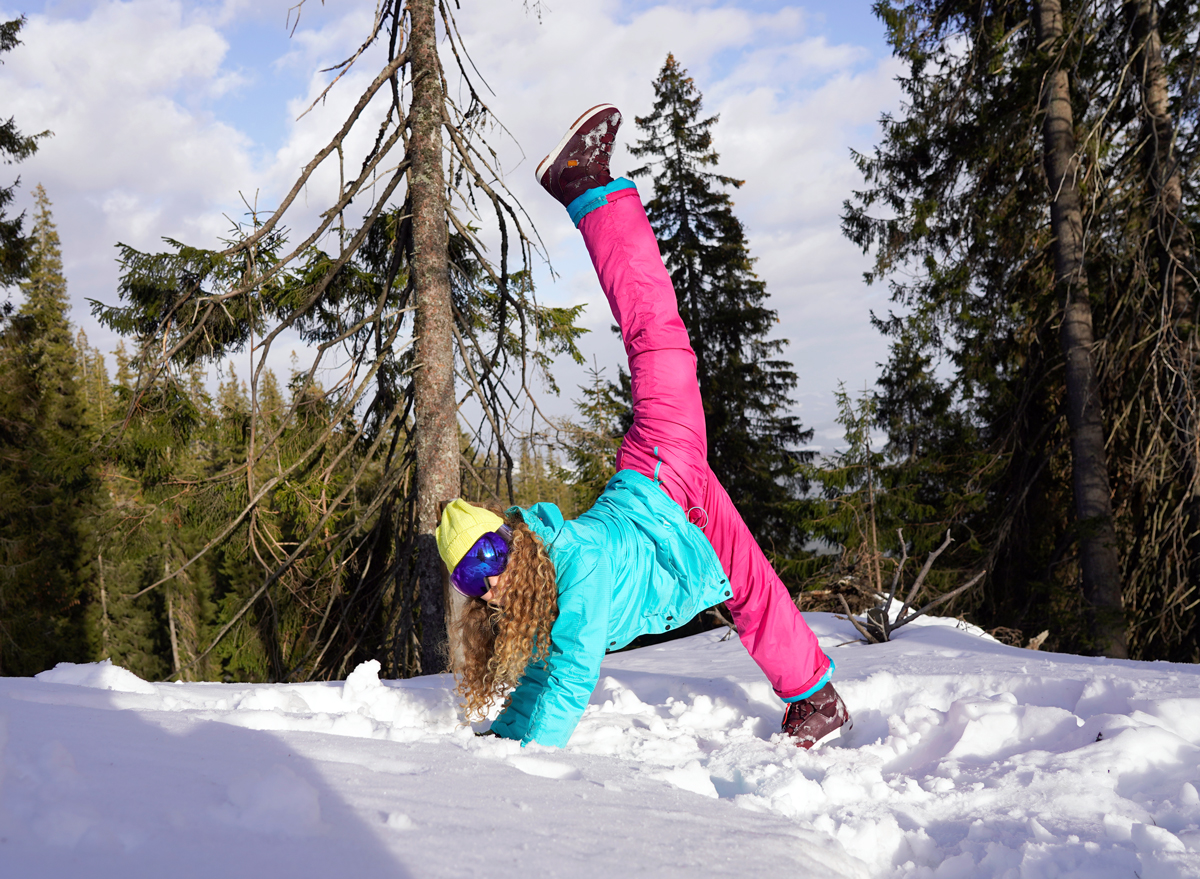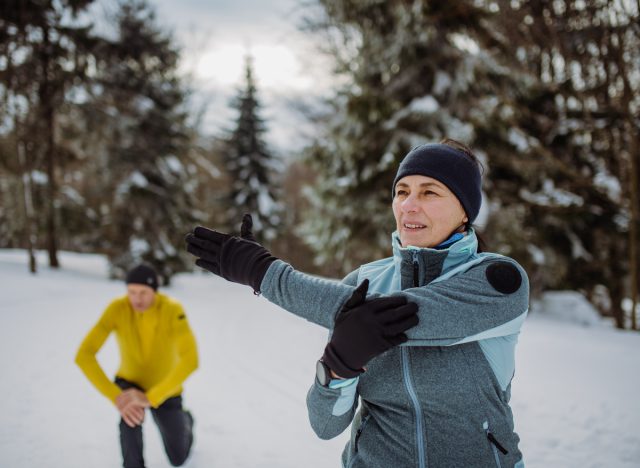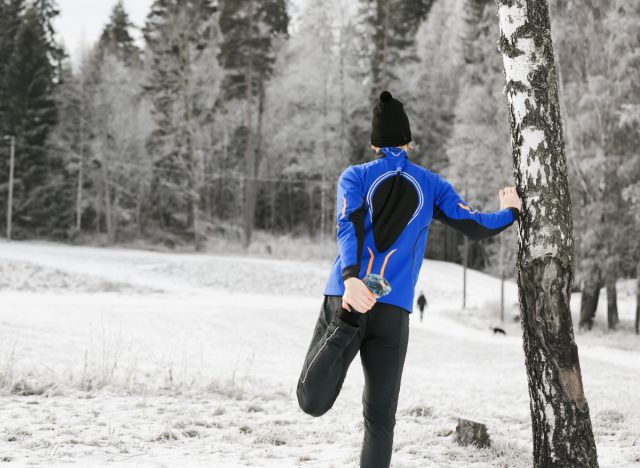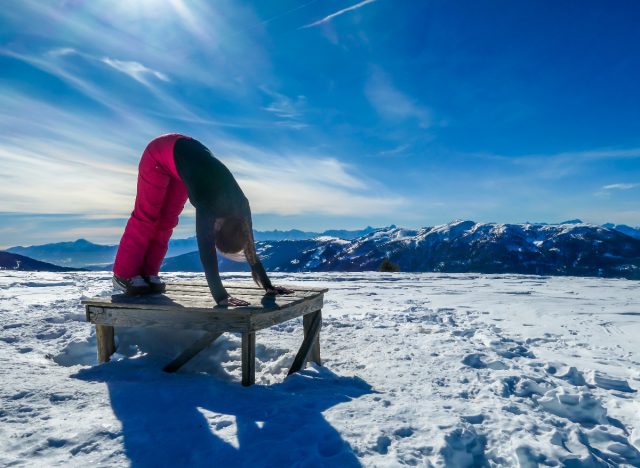5 Best Après-Ski Stretches To Soothe Your Sore Muscles

It's time to grab your skis, and hit the slopes! Ski season is officially upon us, and the fresh powder, ski lifts, and waffle cabins are calling your name. Skiing is an all-around incredible form of exercise, so it's important to have just the right recovery routine on deck after you're done shredding for the day. We chatted with Brittany Masteller, Ph.D., Orangetheory's research scientist, who shares with us the absolute best stretches to do after skiing to help soothe your sore muscles. Keep reading to learn more, and next, don't miss Fun Winter Activities To Lose Weight Without Trying.
Focus on light stretching if you're sore post-skiing or after any snow sport.

Dr. Masteller tells Eat This, Not That!, "Skiing and winter sports are often performed in a constant state of slight hip flexion and forward lean. This is why muscles in the front of the body may feel sore after performing winter sports. With stretching, the intensity should be light and not painful. If experiencing any pain, lessen the intensity of the stretch."
As with any workout, recovery is a key part of the process. Your body needs it to repair! "It is important to dedicate time to recovery in a fitness routine," Dr. Masteller says.
The below five stretches to do after skiing target your hip flexors, quads, chest, and rotation muscles. Dr. Masteller says they can be incredibly beneficial to perform if you're sore post-skiing or after engaging in any wintertime sport. Work them into your après-ski routine, and your muscles will seriously thank you!
Standing Quadriceps Stretch

For this first stretch, stand up tall, and position your feet shoulder-width distance apart. Feel free to place your hand on a wall for better stability. With your other arm, grab your ankle on that side, and gently pull your heel up and back to your buttocks. If you feel a solid stretch in the front of your thighs, you're doing it correctly! Repeat the same motion on the opposite side.
Glute/Hip Flexor Stretch
The glute/hip flexor stretch will have you starting out on all fours. Your knees should be lined up with your hips, and your hands with your shoulders. Dr. Masteller instructs, "Bend your right knee, and slide it forward to a position between your hands. Your right heel should be just under your left hip. Extend your left leg straight back behind you. Keep your hips square and facing forward. Slowly lower your chest toward your front leg." Repeat the stretch on the opposite side.
Cat-Cow Stretch
If you're a yogi, you're likely familiar with the cat-cow stretch. You'll begin on all fours with your knees lined up with your hips and your hands with your shoulders. Gradually round your spine up to the sky and "draw in your abs" as you exhale. Release this part of the stretch and bring your belly to the ground, making sure to relax your core and softly bring your gaze to the sky.
Downward Dog

The downward dog is another super popular yoga stretch. You'll once again begin on all fours with your knees lined up with your hips and your hands with your shoulders. Lift up your knees into the air so that you're on your hands and your toes. You should be forming an upside-down "V" with your body. Hold this position, then release. Optionally, you can alternate bringing one heel, then the next, to the floor for an extra calf stretch.
Thread the Needle
Last but not least, it's time to thread the needle! Begin on all fours, making sure your knees are underneath your hips and your hands are under your shoulders. Focus on your right side first as you bring your right arm between your left knee and left hand, lowering your right shoulder toward the floor. Get a solid stretch as you "reach for the opposite side," and breathe deeply one to two times. Repeat the same motion on the opposite side.









